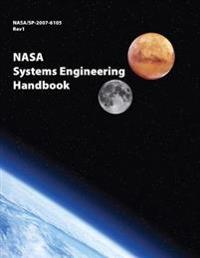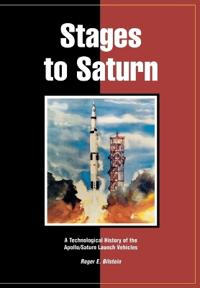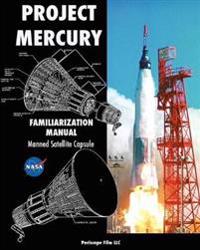NASA Systems Engineering Handbook
ISBN: 9781680920499 - UTGIVEN: 2007-12This is a FULL-COLOR (other variations are in grayscale) reproduction of the National Aeronautics and Space Administration (NASA) Systems Engineering Handbook (NASA/SP-2007-6105 Rev1).The FULL-COLOR versions can be found via these ISBN's:
9781680920499 Hardback
9781680920482 PaperbackThis h[...]NASA Systems Engineering Handbook
ISBN: 9781680920895 - UTGIVEN: 2017-10Notice: Be sure the version you are buying has the words "Full Color Version" in the title. Other versions are in grayscale.Hardcover in full-color - ISBN 9781680920895
Paperback in full-color - ISBN 9781680920901In 1995, the NASA Systems Engineering Handbook (NASA/SP-6105) was initially publish[...]Hubble in Space: NASA Images of Planets, Stars, Galaxies, Nebulae, Black Holes, Dark Matter, & More (häftad)
ISBN: 9781682033005 - UTGIVEN: 2018-04Hubble Images from Space: a Virtual Tour is a book of images from the Hubble telescope curated and edited by Beth Alesse who works in Los Angeles, California. The images were collected using space-based instruments of the Hubble telescope from 1990 to 2017, many in combination with data from numerou[...]
Stages to Saturn (Häftad)
avRoger E. Bilstein, William R. Lucas, NASA History Office
ISBN: 9781780392851 - UTGIVEN: 2011-03NASA SP 4206. NASA History Series. Study of the development of the Saturn launch vehicle for the Apollo Moon Missions. Recounts the exploits of the Saturn vehicle's operational life from orbital missions around Earth testing Apollo equipment to the Moon and back. First published in 1980, this superi[...]
Ideas Into Hardware: A History of the Rocket Engine Test Facility at the NASA Glenn Research Center
ISBN: 9781780396859 - UTGIVEN: 2004-06Nasa Mercury - 1956 to 1963 - All Models
ISBN: 9781785210648 - UTGIVEN: 2017-06Full coverage of the design, engineering, development and flight operations of NASA's Mercury spacecraft, which in addition to several unmanned tests supported two piloted ballistic sub-orbital flights in 1961 and four piloted orbital flights between 1962 and 1963.The Mercury programme bridged the g[...]
NASA Skylab Owners' Workshop Manual
ISBN: 9781785210655 - UTGIVEN: 2018-01Skylab has a fascination among space professionals and enthusiasts alike and a book on the engineering and design of this space station has been argued for in blogs and chat rooms for many years. No other book has yet been published which describes the technical, design and engineering details of ho[...]
Nasa/ESA/ASI Cassini-Huygens
ISBN: 9781785211119 - UTGIVEN: 2017-05The descent of the Huygens probe to the frozen surface of Saturn's moon, Titan, in 2005, marks a pinnacle achievement in space exploration - the most distant planetary landing ever made or presently foreseen. The Huygens probe's seven-year voyage through space (past Venus, Earth and Jupiter) attache[...]
Nasa Operations Manual
ISBN: 9781785211157 - UTGIVEN: 2018-09This book provides, for the first time, a comprehensive manual explaining how NASA works and operates its various programmes, opening the door to NASA facilities across the United States. The down-to-earth text provides a directory of information on the various facilities, what they do, the technica[...]
Haynes Nasa Mission AS-506 Apollo 11 Owners' Workshop Manual (Inbunden)
avChristopher Riley, Phil Dolling, Christopher Riley
ISBN: 9781844256839 - UTGIVEN: 201001On 20 July 1969, US astronaut Neil Armstrong became the first man to walk on the moon. This is the story of the Apollo 11 mission and the 'space hardware' that made it all possible. This manual looks at the evolution and design of the mighty Saturn V rocket, the Command and Service Modules, and the [...]
NASA Space Shuttle Manual (Inbunden)
ISBN: 9781844258666 - UTGIVEN: 2011-03Designed between 1969 and 1972 and first flown into space in 1981, the NASA Shuttle will have flown almost 140 missions by the time it is retired in 2010. David Baker describes the origin of the reusable launch vehicle concept during the 1960s, its evolution into a viable flying machine in the early[...]
Nasa's Voyager Missions (Pocket)
avBen Evans, David M. Harland
ISBN: 9781852337452 - UTGIVEN: 2003-11-11For the first time, in one volume, Ben Evans with David Harland will not only tell the story of the hugely successful Voyager missions, but also that of the men and women who have devoted their entire working lives to them. Illustrated with stunning images, some in color, they describe the missions [...]
Project Apollo: The Tough Decisions (NASA Monographs in Aerospace History Series, Number 37) (Häftad)
avRobert C. Seamans
ISBN: 9781907521300 - UTGIVEN: 201009How NASA Learned to Fly in Space (Pocket)
avDavid Harland
ISBN: 9781926592121 - UTGIVEN: 2010-04NASA learned to fly in space in a time when the agency was young and lean, and had an explicit mandate of staggering audacity set against a tight deadline; in a time when the agency readily accepted risk, and made momentous decisions 'on the run'; in a time when a rendezvous was a major objective of[...]
XB-70 Valkerie Pilot's Flight Operating Manual (Häftad)
avUnited States Air Force, NASA
ISBN: 9781935700357 - UTGIVEN: 201005Project Mercury Familiarization Manual Manned Satellite Capsule (Häftad)
avNASA
ISBN: 9781935700685 - UTGIVEN: 2011-05Ken's Moon!: Revealing the "dark Mission" of NASA (häftad)
ISBN: 9781986772914 - UTGIVEN: 2018-03The story of Ken Johnston's archive of historic NASA photos and his decision to go public with evidence of the manipulation of those images from the Apollo moon missions is the stuff of legend in the alternative history community. The basic story is that Ken discovered a disturbing situation in the [...]
The Birth of Nasa
ISBN: 9783319284262 - UTGIVEN: 2016-04This is the story of the work of the original NASA space pioneers; men and women who were suddenly organized in 1958 from the then National Advisory Committee on Aeronautics (NACA) into the Space Task Group. A relatively small group, they developed the initial mission concept plans and procedures fo[...]



























